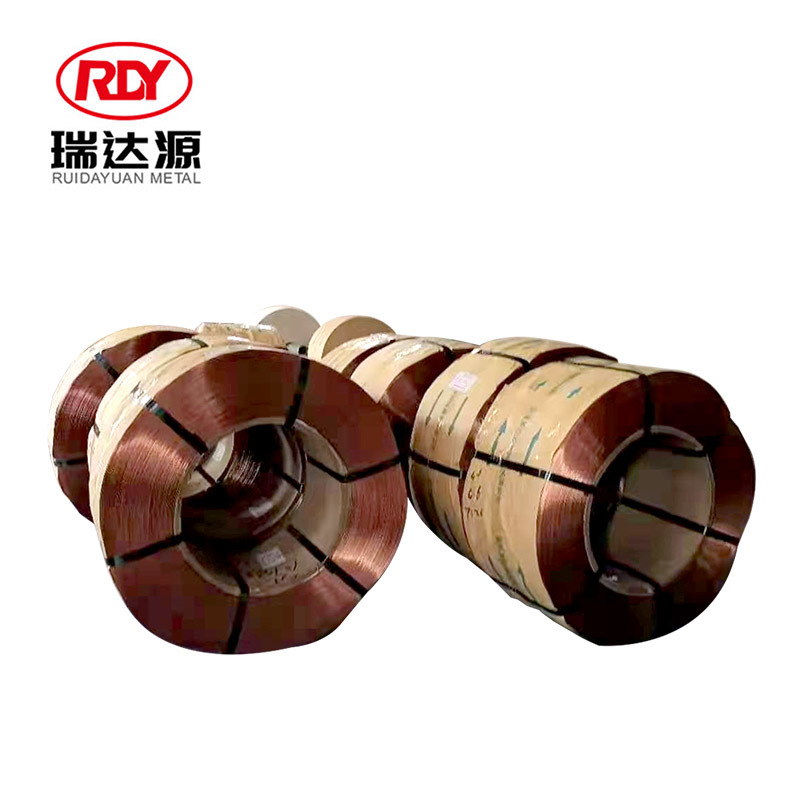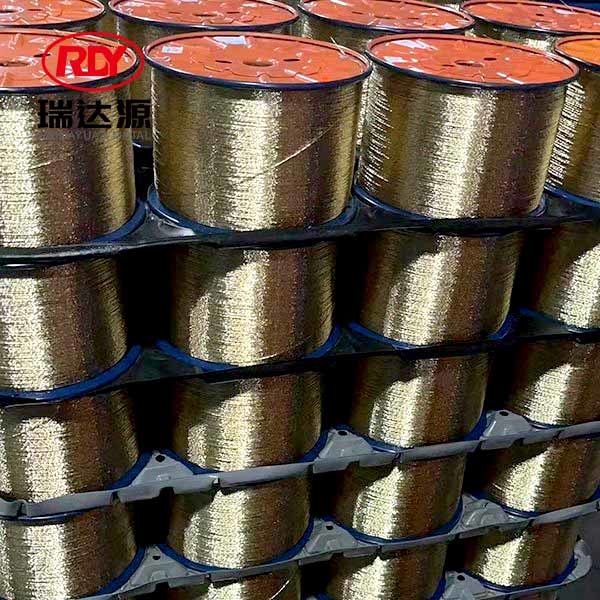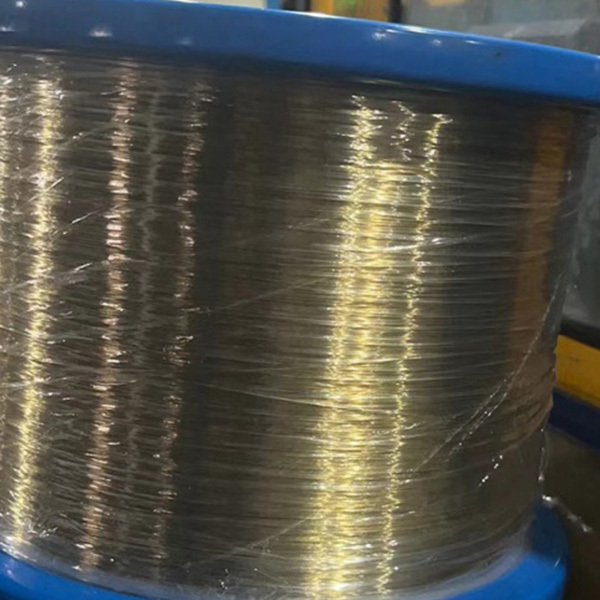Revolutionizing Building Materials: The Game-Changing Impact of Steel Cord Innovation
Release Time:
May 30,2025
Revolutionizing Building Materials with Steel Cord Innovation Introduction: The Unsung Hero of Construction Materials In the ever-evolving world of construction, building materials play a pivotal role in determining the durability, safety, and efficiency of structures. Among these materials, **steel cord** has emerged as a revolutionary innovation, reshaping how we approach construction and design

Revolutionizing Building Materials with Steel Cord Innovation
Introduction: The Unsung Hero of Construction Materials
In the ever-evolving world of construction, building materials play a pivotal role in determining the durability, safety, and efficiency of structures. Among these materials, **steel cord** has emerged as a revolutionary innovation, reshaping how we approach construction and design. This article delves into the transformative impact of steel cord technology on building materials, elucidating its benefits, applications, and future prospects in the construction industry.
The Foundation of Steel Cord Technology
What is Steel Cord?
Steel cord is a composite material made from high-strength steel wires that are twisted together to form a robust, flexible cord. Its unique structure offers a combination of high tensile strength and flexibility, making it an ideal choice for various applications in construction and engineering.
The Evolution of Steel Cord in Construction
Historically, steel has been a cornerstone in construction, but the advent of steel cord technology has marked a significant leap forward. Initially developed for tire reinforcement, steel cords are now being adapted for a wider range of uses, including the reinforcement of concrete, asphalt, and other building materials, thus enhancing their performance and longevity.
The Benefits of Steel Cord in Construction Materials
Enhanced Durability and Strength
One of the most compelling advantages of using steel cord in construction materials is its unparalleled strength. Steel cord's tensile properties surpass those of traditional steel reinforcement bars, leading to:
- **Increased load-bearing capacity** in structural components.
- **Resistance to deformation and cracking** in concrete structures.
- **Longevity and reduced maintenance costs** over the lifespan of the building.
Lightweight and Flexible Characteristics
Unlike standard steel reinforcement, steel cord is significantly lighter, enabling easier handling and installation. Its flexibility allows for:
- **Versatile design options**, making it possible to create intricate architectural shapes.
- **Reduced transportation costs** due to lower weight, which is a compelling advantage for large-scale projects.
Improved Sustainability in Construction
As the construction industry moves towards sustainability, steel cord innovation aligns perfectly with this trend. The benefits include:
- **Reduction of material waste** during construction, as steel cords can be cut to specific lengths without compromising strength.
- **Recyclability**, as steel is a material that can be repurposed indefinitely without losing its properties.
Applications of Steel Cord in Modern Construction
Reinforcement of Concrete Structures
Steel cord is increasingly being utilized in the reinforcement of concrete, allowing for enhanced structural integrity. By incorporating steel cords into concrete mixtures, builders can significantly improve:
- **Crack resistance**, leading to structures that withstand weather and load stresses.
- **Weight efficiency**, making designs feasible that were previously unattainable.
Asphalt Reinforcement for Pavements
In the realm of road construction, steel cord has proven to be a game-changer. Its application in asphalt mixes helps in:
- **Extending pavement lifespan**, thereby reducing the frequency of repairs.
- **Enhancing resistance against ruts and deformation**, even under heavy traffic conditions.
Innovative Use in Prefabricated Structures
The rise of prefabricated construction has opened new avenues for steel cord use. Its lightweight and strong properties make it suitable for:
- **Modular construction units**, allowing for faster assembly on-site.
- **High-rise buildings**, where weight savings are crucial for structural stability.
The Future of Steel Cord in Construction
Emerging Technologies and Innovations
As research continues to advance, new innovations in steel cord technology are on the horizon. Potential developments include:
- **Smart steel cords** that can monitor structural health through embedded sensors.
- **Advanced coatings** that enhance corrosion resistance, further prolonging the lifespan of structures.
Integration with Sustainable Practices
The construction industry's shift towards sustainable practices is likely to amplify the use of steel cord. Future trends might include:
- **Biodegradable composites** that integrate steel cord for temporary structures.
- **Lifecycle assessment tools** that quantify the environmental impact of using steel cord versus traditional materials.
Challenges and Considerations in Implementing Steel Cord Technology
Cost Implications
While the benefits of steel cord are numerous, initial costs may pose a barrier for some projects. It is essential to consider:
- **Long-term savings in maintenance and durability** against upfront costs.
- **Potential for cost reductions** as production scales up and technology advances.
Training and Knowledge Gaps
The integration of steel cord technology requires specialized knowledge and skills. Hence, the industry may face challenges such as:
- **Need for training programs** that equip engineers and builders with the necessary expertise.
- **Industry acceptance**, which may take time as professionals adapt to this new technology.
FAQs about Steel Cord Innovation in Construction
What advantages does steel cord have over traditional steel reinforcement?
Steel cord offers superior tensile strength, flexibility, and durability while being lighter, which makes it easier to handle and install.
Can steel cord be used in all types of construction?
Yes, steel cord is versatile and can be used in various applications, including concrete reinforcement, asphalt pavements, and prefabricated structures.
How does the use of steel cord contribute to sustainability?
Steel cord minimizes material waste and is recyclable, making it a sustainable option compared to traditional materials.
What are the long-term cost benefits of using steel cord in construction?
While initial costs may be higher, steel cord's durability leads to reduced maintenance and repair costs, providing long-term savings.
What future innovations can we expect from steel cord technology?
Emerging developments may include smart technologies for structural monitoring and advanced coatings for enhanced durability.
Conclusion: Embracing the Future of Building Materials
The introduction of steel cord technology into the construction industry signifies a major breakthrough in building materials. With its exceptional strength, lightweight nature, and sustainability benefits, steel cord is poised to revolutionize the way we construct and design structures. As the industry continues to innovate and embrace these advancements, we can look forward to a future where our buildings are not only more resilient but also more sustainable. The journey of incorporating steel cord into construction is just beginning, and its potential is expansive. Embracing these innovations will not only enhance the quality of our buildings but also contribute to a greener planet.
Keywords:
Related news








